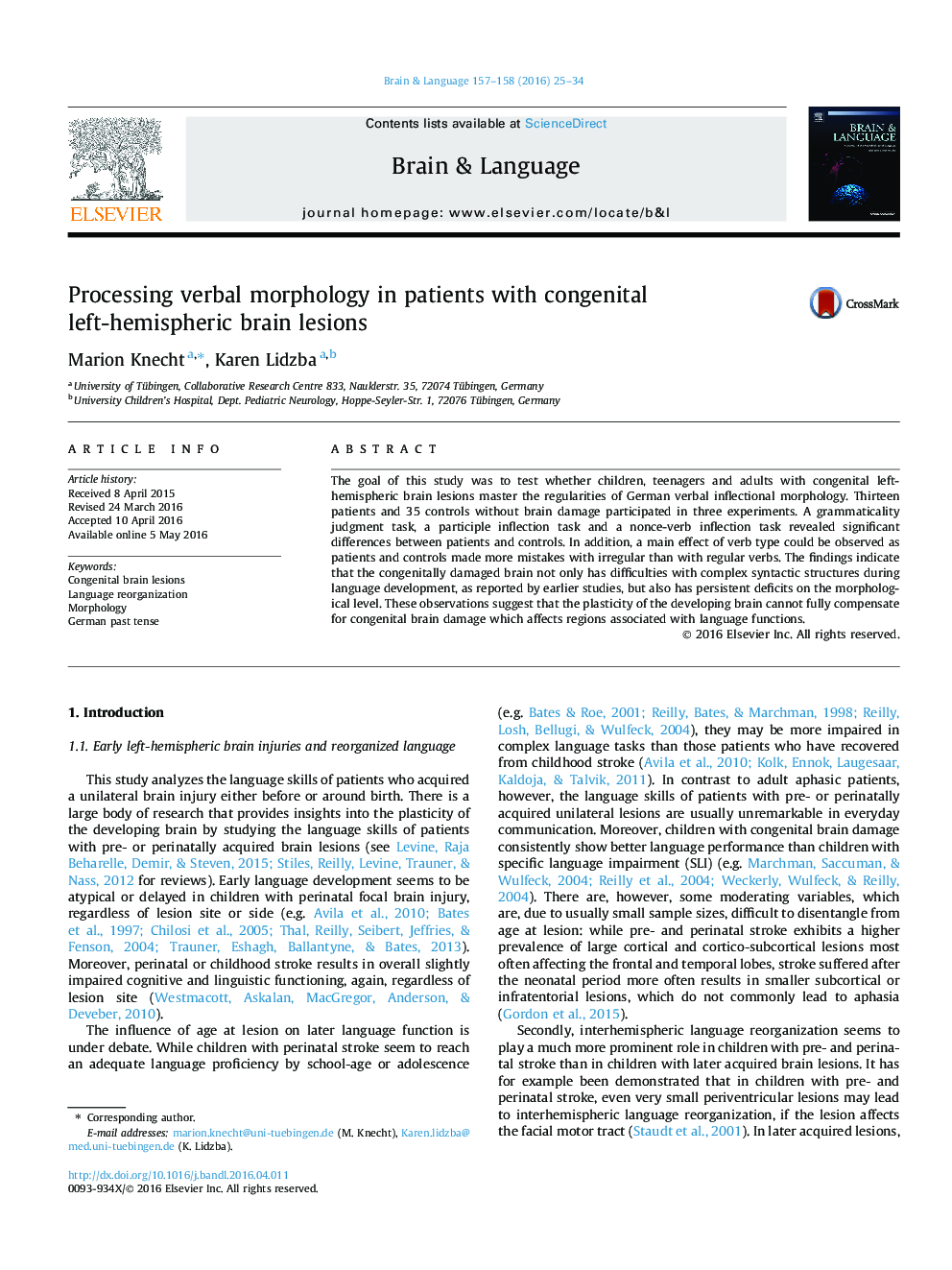| Article ID | Journal | Published Year | Pages | File Type |
|---|---|---|---|---|
| 925236 | Brain and Language | 2016 | 10 Pages |
•We tested if patients with congenital brain lesions master German verbal morphology.•Children, teenagers and adults with pre- or perinatally acquired brain lesions participated in the study.•We found significant differences between patients and controls across age groups.•The study revealed significant differences between irregular and regular verbs.•Patients show persistent deficits on the morphological level.
The goal of this study was to test whether children, teenagers and adults with congenital left-hemispheric brain lesions master the regularities of German verbal inflectional morphology. Thirteen patients and 35 controls without brain damage participated in three experiments. A grammaticality judgment task, a participle inflection task and a nonce-verb inflection task revealed significant differences between patients and controls. In addition, a main effect of verb type could be observed as patients and controls made more mistakes with irregular than with regular verbs. The findings indicate that the congenitally damaged brain not only has difficulties with complex syntactic structures during language development, as reported by earlier studies, but also has persistent deficits on the morphological level. These observations suggest that the plasticity of the developing brain cannot fully compensate for congenital brain damage which affects regions associated with language functions.
